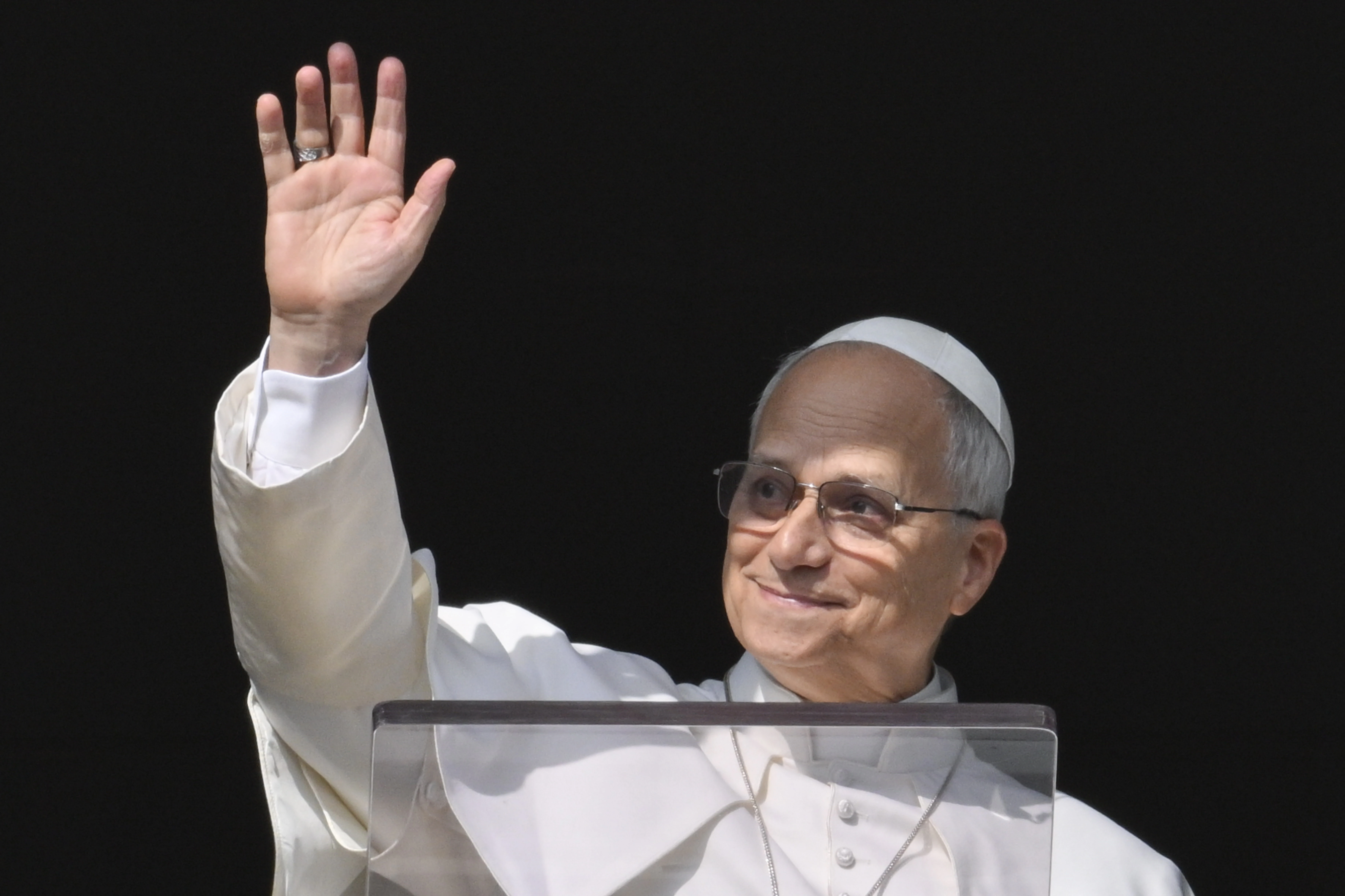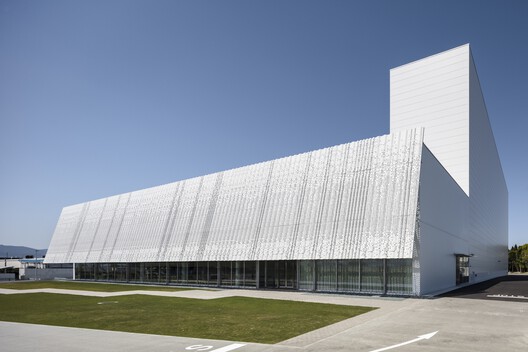Europe learned to love American LNG. This is how Trump wrecks it.
Alliances sometimes begin by accident. Sometimes they end that way, too.
Especially when Donald Trump is involved.
In the fall of 2013, Fred H. Hutchison was hanging around a mixer at the Lithuanian embassy, which sits inside the remaining tower of a partially demolished mansion a couple of miles north of the White House. After several decades as a gun-for-hire Washington, D.C., lobbyist, Hutchison had forgotten more of these events than most people ever go to. But this one he remembers.
Partway through the evening, Hutchison heard a diplomat grumbling about the United States’ jealous grip on its enormous newly tapped reserves of shale gas. They got to talking.
The diplomat turned out to be the deputy head of the Lithuanian mission, Simonas Šatūnas. Lithuania was totally reliant on Russia for gas, he said. He wanted the Obama administration to share the love, he told Hutchison, and approve gas exports to Europe.
“I thought, ‘Well now, that sounds like a possible lobbying opportunity,’” Hutchison recalled when he met POLITICO in the business lounge of a London hotel in June.
Encouraged by Šatūnas and his diplomatic connections, Hutchison set up a pressure group of around a dozen D.C. embassies — all from eastern and central Europe — that would work alongside the U.S. gas industry in service of one goal: bringing more U.S. liquefied natural gas (LNG) to Europe. These post-Soviet countries did not share the faith, widespread in other parts of the continent, that Vladimir Putin’s imperial impulses could be sedated by the multi-billion euro energy trade with the European Union.
They couldn’t have known it at the time, but the pair would soon be swept into a historic energy shift that would reshape the U.S. relationship with Europe, tilt Washington’s interests toward the EU’s eastern rim, and allow the continent to swap Russian for American gas after Moscow invaded Ukraine.
Donald Trump is now threatening that energy alliance — one he claims to champion, even forcing the EU this week to commit to a handshake agreement to import a logistically infeasible $750 billion worth of U.S. energy.
The widening fear on the EU’s eastern fringe is that Trump — despite recently sharpening his tone with Putin — will undermine this trade by offering the Russian president huge concessions and “enormous economic deals” to end his war, all while resurrecting the autocrat’s international standing in the aftermath.
It’s the sledgehammer that could smash the West’s economic firewall around Russia — and take American energy with it, according to former and current diplomats from that part of Europe, as well as U.S. experts and industry figures. Already, oil and gas executives are cautioning the White House about this outcome, while also plotting in case their pleas are ignored.
“The one thing that would derail the spectacular growth of the U.S. [LNG] industry is the reopening of flows from Russia. There’s no question about that,” said Geoffrey Pyatt, who was ambassador to Ukraine when Russia invaded Crimea in 2014 and led the State Department Bureau of Energy and Natural Resources under former President Joe Biden.

The pipelines to Europe aren’t being switched back on. Yet. But U.S. sanctions on Russia are softening, and some Europeans are whispering about reviving Russian energy imports. American investors have even discussed a partnership with Russian officials to reopen gas flows to Germany.
“Of course, we are concerned about the talk of a return to Russian energy, and the lack of clarity about the U.S.’s position,” said an official from an Eastern European country, who was not authorized to speak publicly. “But we are hopeful that we will win the argument that it would be a mistake to go back.”
How the U.S. energized Europe
It’s almost unthinkable in the age of Trump’s “American Energy Dominance” and the EU’s scramble to quit Russian gas that a desire for shiploads of U.S. gas was once unfashionable on both sides of the Atlantic.
U.S. manufacturers wanted to keep the shale revolution’s rewards for themselves. While in Western Europe at least, Wandel durch Handel (the lofty German foreign policy assumption that troublesome neighbors like Putin would “change through trade”) was conveniently aligned with the roaring economic benefits of cheap Russian gas.
“The Germans, the French, the Italians, the Austrians, everybody from Western Europe was content with the status quo,” said Hutchison in an Idaho farm-boy drawl. But countries like Lithuania, Poland and the Czech Republic “understood their vulnerability. And having been former Soviet satellites, understood the risk they faced.”
Russian gas will always win on price, given the extra expenses for U.S. LNG: Compressing the gas into a liquid, loading it onto ships, hauling it across the Atlantic and then regasifying it for use on the continent.
But countries like Lithuania were willing to pay a premium for energy from an ally because of their history and because “they had a front row seat to Russia’s actions” when it illegally annexed Ukraine’s Crimea in 2014, Pyatt said. Then the U.S. ambassador to Ukraine, Pyatt recalled that Polish Foreign Minister Radoslaw Sikorski desperately wanted to wriggle out of Russia’s grip.
“That’s 100 percent of the explanation,” Pyatt said. “It’s the near neighbors who realize that Ukraine was the bulwark that was going to protect Eastern Europe from a revanchist Russian agenda that went far beyond Ukraine.”
So it was easy for Hutchison to convince those countries to join the U.S. LNG push. In early 2014, he formed the organization LNG Allies as a public face for his embassy pressure group. He said the initial funding came from two trade bodies: the now-defunct America’s Natural Gas Alliance and the American Petroleum Institute (API). A spokesperson for API confirmed it had “previously” funded the group.
Hutchison said LNG Allies never received funding from foreign governments, though Croatia, Lithuania and the Czech Republic sat on the LNG Allies advisory board. A Foreign Agents Registration Act filing from 2014 said the group received foreign government support. Hutchison said that statement was “inaccurate” and was made in anticipation of funding that never came.
The pressure from all sides bore out, and in 2016, the first LNG shipment left Cheniere Energy’s Sabine Pass terminal in Louisiana. Then the floodgates opened: From a standing start, the U.S. became the largest global gas exporter by 2023.
LNG Allies pivoted and grew with the industry. It went from a clutch of embassies in Washington lobbying the U.S. government to a global industry association pushing U.S. energy exports around the world.
Hutchison hosts regular, intimate salons where American energy executives and European buyers broker new deals — invariably toasting them with brown liquor. He counts “several large natural gas producers” among his members. Though his shop, he added, was “in Washington terms, pretty small potatoes.”
U.S. government diplomacy has meantime shifted gear to all-out LNG expansionism. Successive American administrations have pressured EU countries to build out their ports’ capacity to take on more gas.
European governments experienced it as part charm offensive, part offer they couldn’t refuse.
“They don’t pay for anything. That’s the funny thing,” said Bulgaria’s former environment minister, Julian Popov, describing a pattern he said he witnessed multiple times in his country and others. “First, the ambassador will go and have a quite American-style diplomatic conversation. You must do this. And this. And that’s it.”
Then, he said, senior administration officials would visit the country before, finally, the energy minister was invited for a tour of U.S. gas facilities.
“I’m not saying that they lock him up and beat him up. But they show him technologies. Tell him that this has to be done,” he said. “They put pressure on many different points.”
Despite Joe Biden’s more climate-friendly rhetoric and eventual pause on building new LNG export facilities, the pressure to build more terminals never let up.
“That hasn’t changed at all,” said Popov. “‘Buy our LNG’ is their story.”
More and more LNG terminals are planned. Since 2015, LNG imports to Central and Eastern European countries have increased 12 times over, according to the Ember think tank. In the next five years, terminal capacity in the region will double, with more under discussion. The analysts warn that supply capacity could quickly outstrip demand, which is declining.
Hutchison, alongside the Atlantic Council and several European lobby groups, has played a supporting role. In 2018, the Center for Public Integrity reported that LNG Allies was working on a program with the U.S. Trade and Development Agency (USTDA) on an initiative to promote gas infrastructure development worldwide.
Hutchison sees the return of Trump to the White House as an opportunity to step up the pace. Minutes of an April meeting of the LNG Allies “Embassy Working Group” — which ARIA, a climate investigations NGO, shared with POLITICO — said the USTDA initiative was going to be rebooted “with anticipated substantial U.S. support.”
Trump goes courting
As anticipated, Trump’s lovebombing of Central and Eastern Europe recommenced in January.
It’s a part of the continent he has always found more open to him. Leaders there don’t carry around with them the faded global power pretensions of their French or German counterparts. By and large they run Europe’s fastest-growing economies, are generally open for business, and are less concerned about green issues. A few have overtly MAGA tendencies.
One of the new administration’s core messages for Eastern Europe — alongside LNG boosterism — has been a plea to reject climate regulations from Brussels.
One focus has been an EU regulation passed in 2024 that could lead to fines on gas importers that don’t reduce their methane pollution. The U.S. has pushed for various outs, in public and in private — including during trade talks currently taking place between the bloc and the White House.
In April, on his first overseas trip, Energy Secretary Chris Wright landed in Warsaw, where he denounced Brussels’ “top-down diktats” on climate. He suggested to nations that still remember Communist rule that green policy may be a stalking horse for reestablishing “top-down control.”
Trump was offering an alternative, he said: “We warmly welcome you to join us on Team Energy Freedom and prosperity for citizens.”
At the same time, Hutchison and LNG Allies were quietly pushing EU countries to soften the methane rule. At an April 3 meeting of the Embassy Working Group, which was set up by European diplomats and Hutchison, there was a discussion about “collaborative efforts” with European oil and gas industry groups to “address challenges” for U.S. companies complying with the EU’s methane regulation, according to minutes shared with POLITICO by ARIA.
Emails sent by the gas lobbyists to the EU delegation in Washington displayed LNG Allies’ new email signature, which riffed on Trump’s favorite energy maxim and the refrigeration required for shipping gas: “Chill, Baby, Chill!”
“We haven’t been critical of the EU’s objective of regulating methane,” Hutchison said, but added the regulation was poorly designed. “It seemed to be developed without any factual understanding of how the gas system works in the United States.”
In a June note, seven governments — Bulgaria, Czechia, Greece, Hungary, Romania, Slovakia and Slovenia — requested that the European Commission scale back the demands on companies to report their methane emissions.

“I would not be surprised if this paper had been drafted by the fossil fuel industry,” said Jutta Paulus, a member of the European Parliament from the Greens.
Hutchison said he wasn’t behind it. But when POLITICO asked him if he saw the Central and Eastern European signatories as the fruit of a decade-long cultivation of the region, he said: “Sure, I think it is.”
Trump reality check
If Trump wanted a poster child for unleashing American energy dominance, it doesn’t get much more compelling than Europe.
After the EU’s eastern flank opened the door, Russia’s invasion of Ukraine united the continent in a U.S. energy embrace. Through its “projects of common interest” scheme, the EU has poured billions into building a gas pipeline network that connects many LNG terminals to Central and Eastern Europe.
On May 8, the EU’s ambassador to the U.S., Jovita Neliupšienė, bestowed on Hutchison the Transatlantic Bridge Award — a recognition from all EU countries of “his relentless effort to create a stronger EU-U.S. market for liquefied natural gas.”
“I don’t see any daylight in general between the East and Western Europe any longer,” said Hutchison. He recalled the bonhomie of a tour of Texan facilities he took in March with the new EU Energy Commissioner Dan Jørgensen, who until last year was Denmark’s climate minister.
And this past weekend, when Trump met European Commission President Ursula von der Leyen to finalize their trade deal, the U.S. leader’s “No. 1” priority was to convince Europe to “stop buying Russian energy” and “buy it from us” instead, said a U.S. official, granted anonymity to reveal details of the private discussion.
“And they agreed,” the official added. “It is just such a complete change … and it’s a commitment to buy from America.”
Trump even initially demanded that von der Leyen commit to $1 trillion in U.S. energy purchases during his term, the official said, before settling on $750 billion ($250 billion annually).
But the numbers are non-binding, hyperbolic and unrealistic. To reach that figure, the U.S. would have to divert all its energy exports to the EU — and then somehow find 50 percent more in supplies. Meanwhile, the EU would have to essentially ditch its other foreign suppliers (including those providing cheaper energy) and more than triple its U.S. imports.
And that’s assuming Europe has adequate infrastructure to receive all that U.S. fuel, which it does not. And that private companies would go along with the plan, which they can’t be compelled to honor.
Instead, insiders in Washington and Europe say it’s Trump himself who is jeopardizing the transatlantic love-in — including an LNG trade that was worth $20.3 billion in 2024 (according to trading platform Kpler) and that accounted for 53 percent of all U.S. LNG exports.

Trump’s overall unreliability as a partner — his tariffs, his taste for bullying, his open disparagement of the EU — make Europeans wary of swapping reliance on one strongman for another.
Despite pressure from Trump, most EU buyers have refused to sign long-term contracts with U.S. companies, against a backdrop of declining gas demand on the continent and more supply coming online from alternative exporters like Norway and Qatar.
Italian firm ENI and Virginia-headquartered exporter Venture Global broke that streak in July, striking a 20-year deal to supply LNG to the EU. Analysts immediately criticized the arrangement for reflecting the political priorities of the Italian government rather than market realities. That came shortly after Venture signed a similar contract with German company Securing Energy for Europe.
LNG Allies didn’t have direct involvement in the ENI deal, Hutchison said. But Douglas Hengel, a senior consultant for Hutchison’s LNG Allies, was once the No. 2 in the U.S. Embassy in Rome. He knows “the ENI folks,” Hutchison said, and “never misses a chance to pitch them.”
On top of this, people who have talked to the administration on energy and on European matters told POLITICO that tension exists between two factions: White House officials wanting to prioritize a peace deal, and officials on the National Energy Dominance Council — like Wright, the energy secretary, and Interior Secretary Doug Burgum — who warn that a peace deal letting Russian gas into Europe would reverse recent U.S. LNG gains.
For instance, a Trump-brokered peace deal could involve lifting U.S. sanctions on Russian LNG.
That “would be the Trump administration shoving Russian gas down the throats of the Europeans,” said one person familiar with the matter, granted anonymity to describe private discussions. “Europeans are saying a hard ‘no.’ They’re proud of what they’ve done in the past three years in getting off Russian gas.”
The message from Brussels is that a Russian energy reset is a non-starter. The European Commission has even proposed phasing out Russian gas by 2028 — although Moscow-friendly Slovakia and Hungary are holding up the plan.
Baltic nations — Latvia, Lithuania and Estonia — as well as Poland and the Nordic countries have been the strongest advocates for a long-term exit. Even though Trump might be sending conflicting signals, Eastern and Central Europeans are working to keep the doors wide open for American energy. Ignacy Niemczycki, a secretary of state and top adviser to Polish Prime Minister Donald Tusk, said the EU’s proposed Russian gas ban was thanks to “our pressure.”
“We are pushing for ending the reliance on Russia,” said Niemczycki. “If we can get cheap LNG from the U.S., that also helps.”
But there is a sense that a return to the old ways might prove too tempting for the EU’s limping industrial powerhouses. In Germany, which is trying to revitalize its industrial base, some politicians have said they would welcome Russian gas — though Chancellor Friedrich Merz has ruled that out.
Not everyone in the U.S. is convinced Europe can stay unified with cheap Russian energy on the table.

Stateside oil and gas companies are scenario-planning for what will happen to markets — including Europe’s — if Trump or the EU removes Russian sanctions, said one oil and gas executive who was granted anonymity to discuss internal deliberations. The executive said they do not believe that easing restrictions on Russia is imminent, but are nonetheless weighing the possibility.
Washington is also wary of Trump’s engagement with Putin and the potential impact on homegrown industry. Republican Senator Lindsey Graham, a Trump ally, has floated legislation that would impose 500 percent tariffs on any country that buys Russian energy. But even Graham’s legislation underscores the difficulty of boxing out Moscow: It allows exemptions for countries that currently provide aid to Ukraine, meaning the EU.
Some fear Trump’s penchant for spectacle and hyperbole will lead him to a peace deal with Russia that weakens Ukraine and undermines U.S. exports.
Oil and gas industry officials have begun warning the White House that normalizing relations with Russia would contradict Trump’s energy and economic agenda that centers on shipping more fossil fuels overseas. They cautioned that Moscow would almost certainly expect Washington to lift sanctions on its energy industry, allowing cheaper Russian LNG to undercut the U.S.
For Hutchison, the prospect of a Trump-sanctioned reboot of the EU-Russia gas trade was akin to “an asteroid strike … something that is probably beyond our control.”
While he said “it will be very difficult in Brussels and in Berlin and an awful lot of other capitals … to ever go back,” he acknowledged some Europeans will be tempted, and “because it’s a monopoly, [Russia] can always undercut the price of energy from anywhere else.”
It will ultimately come down, he believes, to a discussion between a very small number of people around Trump about their priorities. “Should it get up to that highest level, I think you would both see Burgum and Wright being particularly vocal about what the negative implications would be,” Hutchison said, referencing Trump’s interior and energy secretaries.
That’s a dimmer picture than the optimism on display a little over a week after Trump’s inauguration, when Hutchison met with European diplomats at the Polish embassy in Washington.
Behind Hutchison’s seat at the head of the table, a U.S. flag blazed from a widescreen television monitor. The screen displayed four words, written in bold typeface: “UNLEASH AMERICAN ENERGY DOMINANCE.”
Half a year on, Trump’s clashing foreign policy and energy agendas risk turning the picture into white noise.
Karl Mathiesen reported from London. Zack Colman and Ben Lefebvre reported from Washington, D.C. Gabriel Gavin reported from Brussels and Warsaw. Hanne Cokelaere reported from Brussels. Ari Hawkins contributed reporting from Washington, D.C.




















:quality(85):upscale()/2023/09/18/918/n/1922398/a1136b676508baddc752f5.20098216_.jpg)
:quality(85):upscale()/2025/10/09/670/n/1922283/00b944c868e7cf4f7b79b3.95741067_.jpg)
:quality(85):upscale()/2025/10/15/765/n/1922398/29c37a6e68efd84bb02f35.49541188_.jpg)
:quality(85):upscale()/2025/09/09/891/n/1922283/7222624268c08ccba1c9a3.01436482_.png)
















